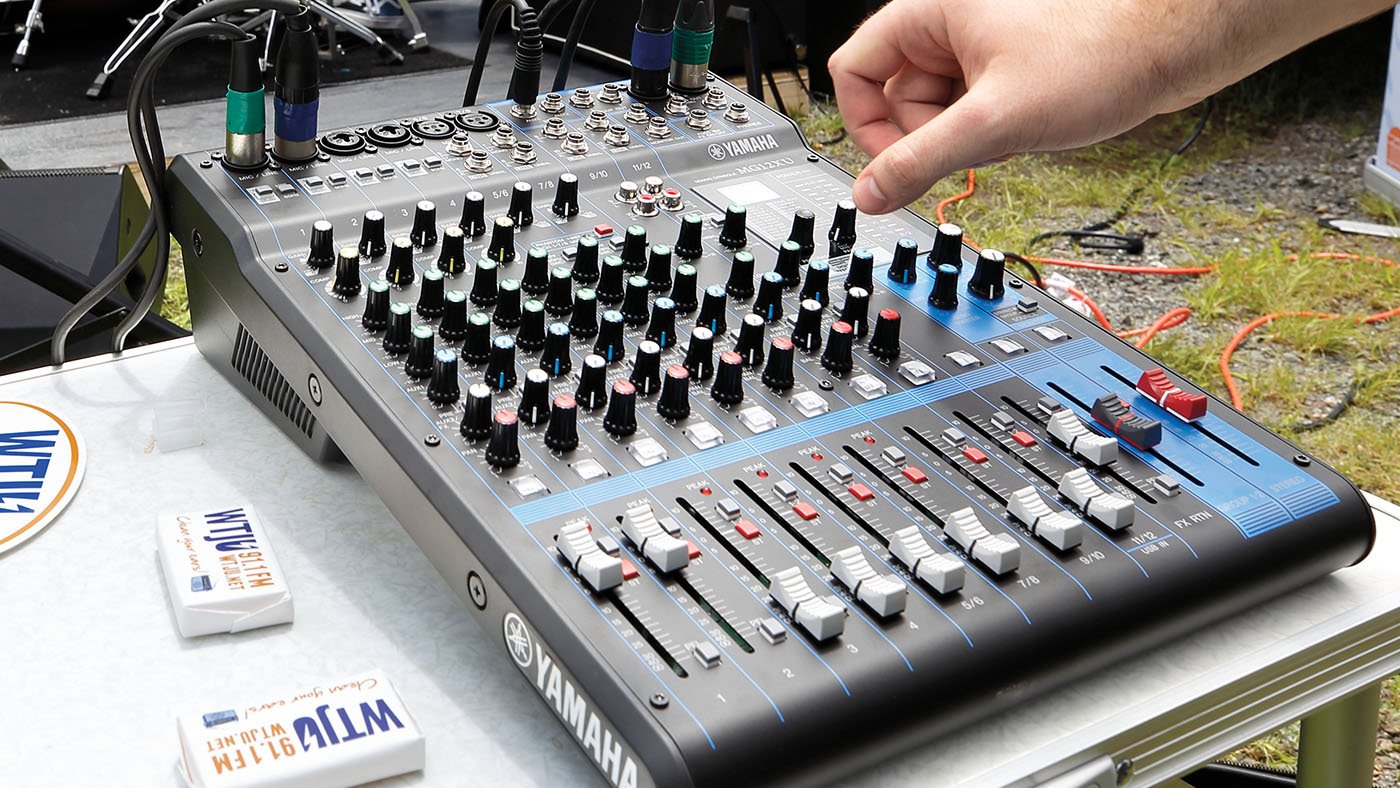Mixing in FL Studio refers to the process of blending and adjusting individual audio tracks to create a polished and cohesive sound. It involves adjusting volume levels, panning, EQ, compression, and effects to enhance the overall audio quality.
Mixing is essential in music production to ensure all elements work together harmoniously for a professional and balanced final product. In today’s digital age, technology has made it easier for musicians and producers to create music from the comfort of their own homes.
FL Studio, a popular digital audio workstation, offers a wide range of tools and features to facilitate the mixing process. Whether you’re a beginner or a seasoned producer, understanding how to effectively mix your tracks in FL Studio is crucial for achieving professional-sounding results. Let’s delve deeper into the world of mixing in FL Studio and explore the techniques and tools that can help elevate your music to the next level.
The Basics Of Mixing In Fl Studio
Mixing in FL Studio is the process of combining different audio tracks to create a balanced and cohesive sound. It involves adjusting levels, panning, and applying effects to each track to ensure they blend harmoniously. Let’s delve into the fundamental aspects of mixing in FL Studio.
The Importance Of Mixing
Mixing is crucial for achieving professional-sounding music. It harmonizes individual elements, enhances clarity, and ensures each sound has its place in the mix. Without proper mixing, audio can sound cluttered and lack impact.
The Role Of Mixing In Audio Engineering
- Mixing in FL Studio is a fundamental skill that every audio engineer should master.
- It involves balancing volume levels, adjusting frequencies, and spatial placement of sound sources.
- Good mixing can transform a raw recording into a polished, radio-ready track.

Credit: www.careersinmusic.com
Fundamental Principles Of Mixing
Mixing in FL Studio is a crucial part of the music production process where various audio elements are combined, balanced, and enhanced to create a polished final product.
Understanding Equalization
Equalization, often referred to as EQ, is the process of adjusting the balance between different frequency components in an audio signal to achieve clarity and tonal balance.
Balancing Levels And Panning
Setting the right levels for individual tracks and adjusting the placement of sound elements within the stereo field through panning are essential for creating a well-balanced mix.
Advanced Techniques In Fl Studio
Advanced Techniques in FL Studio require an in-depth understanding of mixing, effects, and automation. In this article, we will explore advanced mixing techniques, such as utilizing effects and automation, and creating space with reverb and delay, to elevate your music production in FL Studio.
Utilizing Effects And Automation
FL Studio offers a wide array of powerful effects and automation tools to enhance the quality of your mixes. By utilizing effects such as EQ, compression, reverb, and delay, you can shape the tonal quality, add depth, and bring out the dynamics of your individual tracks. Automation allows you to control the parameters of these effects over time, providing precision and creativity in your mix.
Creating Space With Reverb And Delay
Reverb and delay are essential tools for creating a sense of space and depth in your mix. In FL Studio, you can experiment with different reverb types, pre-delay settings, and decay times to add ambiance and create a natural-sounding environment for your instruments and vocals. Similarly, delay effects can be used to produce rhythmic patterns, stereo width, and a sense of spaciousness within your mix.
Mastering The Art Of Audio Engineering
Audio engineering is a creative and technical field that requires a deep understanding of sound, music, and the tools used to manipulate and enhance audio. One crucial aspect of audio engineering is mixing – the process of combining individual audio tracks into a cohesive and balanced final product.
Developing A Critical Ear
Developing a critical ear is an essential skill for any audio engineer. It involves training your ears to discern subtle nuances in sound and identify areas that need improvement. To develop a critical ear, engage in active listening sessions where you focus solely on the sound, paying attention to details such as dynamics, tonal balance, and spatial positioning.
Additionally, regularly reference your mixes against professional recordings to understand the differences and strive for the best possible sound quality. This practice will help you develop a discerning ear and make informed decisions during the mixing process.
Understanding The Emotional Impact Of Mixing
Mixing is not just about achieving technical excellence; it’s also about creating an emotional impact on the listener. A well-executed mix can evoke specific emotions and enhance the overall musical experience.
To achieve the desired emotional impact, consider the arrangement of the song and how different elements interact with each other. Use techniques such as panning to create a wide stereo image and dynamic processing to convey a sense of energy and intensity.
Moreover, pay attention to the frequency balance of the mix to ensure that each instrument occupies its own sonic space and contributes to the overall emotional narrative of the song.
Putting It All Together
Mastering the art of audio engineering requires a combination of technical knowledge, creativity, and a critical ear. By developing a critical ear and understanding the emotional impact of mixing, you can take your mixes to the next level and create captivating soundscapes that resonate with listeners.
Navigating Fl Studio’s Mixing Tools
In FL Studio, mixing is a crucial step in the music production process. It allows you to balance the different elements of your track, enhance their sonic qualities, and create a polished final product. To achieve professional-sounding results, it’s essential to become familiar with FL Studio’s mixing tools and know how to navigate them effectively. In this blog post, we will explore the different aspects of FL Studio’s mixer interface and introduce you to various plugins and tools that can take your mixing skills to the next level.
Exploring The Mixer Interface
The mixer interface is where the magic happens in FL Studio’s mixing process. It provides a comprehensive view of all the tracks in your project, allowing you to control their volume, panning, effects, and routing. Here’s a breakdown of the key elements you’ll encounter:
- Mixer Channels: Each track in your project is represented by a mixer channel, which provides control over individual audio and MIDI elements. These channels are displayed vertically in the mixer interface, allowing you to adjust their settings independently.
- Volume and Panning Controls: Each mixer channel includes sliders for adjusting the volume and panning of the corresponding track. By adjusting these controls, you can create a balanced mix and position your sounds precisely in the stereo field.
- Effect Slots: FL Studio’s mixer provides various effect slots for adding plugins to your tracks. These slots allow you to apply EQ, compression, reverb, delay, and other effects to shape the sound and add depth to your mix.
- Sends and Returns: Sends and returns are additional routing options available in the mixer. You can use sends to route a portion of a track’s audio signal to an auxiliary channel, while returns allow you to process and combine multiple signals together, such as reverb or delay effects.
- Master Channel: The master channel is the final destination for all the audio in your project. It allows you to apply global effects and controls to the overall mix, ensuring consistency and coherence.
Using Plugins And Tools For Enhanced Mixing
FL Studio offers a vast range of plugins and tools that can significantly enhance your mixing capabilities. Here are some essential ones to explore:
| Plugin/Tool | Function |
|---|---|
| VST Plugins | Extend FL Studio’s sonic possibilities by adding third-party virtual instruments and effects. |
| Fruity Parametric EQ 2 | Shape the frequency response of individual tracks and remove unwanted frequencies. |
| Fruity Compressor | Control the dynamic range of tracks and achieve a more balanced mix. |
| Fruity Reverb | Add realistic space and depth to your sounds by applying various reverb algorithms. |
| Maximus | A versatile multi-band compressor that allows precise control over the dynamics of your mix. |
| Fruity Limiter | Prevent clipping and keep your mix within a desirable volume range. |
These plugins and tools are just the tip of the iceberg in FL Studio’s vast arsenal. Experimenting with different plugins and workflows can unlock new creative possibilities and help you achieve your desired mix.

Credit: www.amazon.com

Credit: www.crutchfield.com
Frequently Asked Questions For What Is Mixing In Fl Studio
Faq 1: What Is Mixing In Fl Studio?
Mixing in Fl Studio refers to the process of blending and balancing multiple audio tracks to create a harmonious and professional-sounding output. It involves adjusting levels, equalization, panning, and adding effects to enhance the overall sound quality and clarity of a music production.
Faq 2: Why Is Mixing Important In Fl Studio?
Mixing is crucial in Fl Studio as it allows you to achieve a polished and balanced sound by bringing out the best elements of each track. It helps in removing unwanted noise or frequencies, improving the overall dynamics, and creating a cohesive and enjoyable listening experience for your audience.
Faq 3: How Do I Start Mixing In Fl Studio?
To start mixing in Fl Studio, you can begin by organizing your tracks and creating a clear audio hierarchy. Adjust individual track levels, apply EQ to shape the frequency balance, use compression to control dynamics, add effects to enhance the audio, and make use of automation to add movement and variation to your mix.
Faq 4: What Are Some Common Mixing Techniques In Fl Studio?
Some common mixing techniques in Fl Studio include proper gain staging, using plugins for EQ and compression, creating a balanced stereo image through panning, applying time-based effects like reverb and delay, utilizing sidechain compression for better separation, and referencing your mix on different speakers and headphones.
Conclusion
Understanding mixing in FL Studio is crucial for creating professional, high-quality music. With the right techniques and tools, you can achieve a balanced and polished sound. By applying these principles and experimenting with different effects, you can elevate your music to new heights and stand out in the competitive music industry.